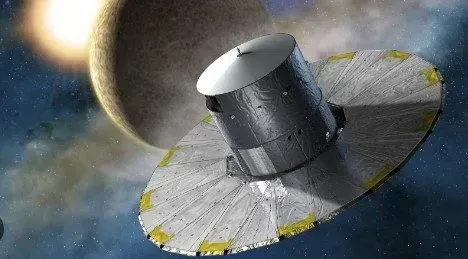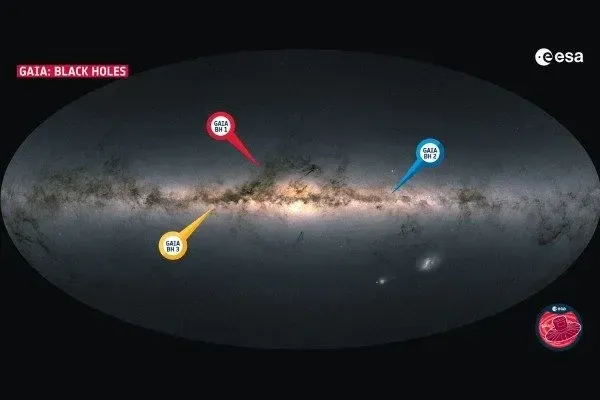The Final Transmission: Saying Farewell to a Cosmic Pioneer
At precisely 09:42 UTC on July 18, 2024, a hush fell over the control room at the European Space Operations Centre in Darmstadt. Engineers who had spent their entire careers working with the Gaia space telescope watched solemnly as the final command was transmitted. The signal traveled at light speed for five seconds before reaching Gaia – now floating 1.5 million kilometers away – officially ending one of the most successful astronomy missions in history.
“This moment feels like saying goodbye to an old friend,” confessed mission operations engineer Luca Storini, who had worked on Gaia since its 2013 launch. “For over a decade, this spacecraft has been our window into the galaxy’s secrets.”
The Ambitious Mission That Rewrote Astronomy
A Revolutionary Approach to Cosmic Cartography
When Gaia launched from French Guiana on December 19, 2013, it carried with it the most ambitious mapping project ever conceived. Unlike traditional telescopes that study specific celestial objects, Gaia was designed to conduct a continuous, all-sky survey of everything bright enough to detect.
By the extraordinary numbers:
- 1.8 billion stars cataloged with unprecedented precision
- 200 times more stars mapped than the previous Hipparcos mission
- 20 million observations per day at peak operations
- 1.6 petabytes of raw data collected (equivalent to 2 million CD-ROMs)
The Engineering Marvel Behind the Science
Gaia’s success stemmed from several groundbreaking innovations:
- The Billion-Pixel Camera: At launch, Gaia’s focal plane contained 106 CCD detectors – the largest digital camera ever flown in space at the time.
- Microarcsecond Precision: Gaia could measure star positions so accurately it could detect:
- The width of a human hair from 1,000 km away
- A euro coin on the Moon’s surface from Earth
- Passive Thermal Stability: The spacecraft maintained its instruments at -110°C with fluctuations less than 0.001°C – crucial for precise measurements.
“Gaia didn’t just take pictures,” explained project scientist Anthony Brown. “It created a multidimensional catalog – measuring positions, motions, brightness, and even chemical compositions simultaneously.”

Discoveries That Reshaped Our Cosmic Understanding
The Milky Way’s Dramatic Autobiography
Gaia’s data revealed our galaxy as a dynamic, evolving structure with a violent history:
- The Gaia-Enceladus Collision: Evidence of a massive dwarf galaxy merging with the Milky Way 10 billion years ago
- Current Galactic Cannibalism: Real-time observation of the Sagittarius dwarf galaxy being torn apart by tidal forces
- Ancient Stellar Rivers: Discovery of two 12-billion-year-old star streams near our galaxy’s core – fossils from its formation
Unexpected Treasures in the Data
Beyond its primary mission, Gaia became an accidental discoverer of cosmic phenomena:
Celestial Oddities:
- Quiet Black Holes: 12 new black holes found by their gravitational influence on companion stars
- Hypervelocity Stars: 20 stars moving fast enough to escape the Milky Way
- Interstellar Visitors: Refined trajectories of objects like ‘Oumuamua
Practical Applications:
- Improved Near-Earth Object tracking for planetary defense
- Most precise test of Einstein’s general relativity beyond the solar system
- Calibration of the cosmic distance ladder
The Emotional Final Year
The Fuel Crisis and Ingenious Solutions
By early 2024, Gaia’s operations team faced a critical challenge:
- Only 9kg of propellant remained from the original 33kg
- Engineers developed “microthrust breathing” techniques to extend operations
- Final orbital adjustments used just 42 grams of fuel – less than a chocolate bar
The Last Light: Final Observations
On July 15, 2024, Gaia took its final science images including:
- A complete scan of the Large Magellanic Cloud
- One last look at the galactic center
- A calibration field containing quasars used for reference
“These final observations were like a photographer’s last shots,” said instrument scientist Carme Jordi. “Every image contained years of memories.”
The Meticulous Goodbye
The 8-Hour Shutdown Sequence
- Orbital Maneuver (09:00 UTC): Final burn to raise perigee
- System Safing (11:30 UTC):
- Science instruments powered down
- Reaction wheels braked to halt
- Final Commands (15:00 UTC):
- Onboard computers reset
- Communication systems disabled
- Last Signal (17:42 UTC): Final carrier wave transmission
“We essentially gave Gaia a proper burial in space,” reflected flight director David Milligan. “Every step was designed to ensure it would never become hazardous debris.”
The Legacy That Lives On
The Data Goldmine: Years of Discovery Ahead
With only 60% of Gaia’s observations fully analyzed, astronomers anticipate:
2024-2026:
- Final Data Release (DR4) with complete 11-year dataset
- Expected discovery of thousands more exoplanets
- Full chemical map of the Milky Way’s disk
2026-2030:
- Combined analysis with James Webb Telescope observations
- Dark matter distribution models
- Refined cosmic expansion rate measurements
Inspiring Future Missions
Gaia’s success paved the way for:
- Euclid (2023): Dark energy surveyor using Gaia’s star maps
- PLATO (2026): Exoplanet hunter building on Gaia’s stellar data
- LISA (2035): Gravitational wave detector using Gaia’s positional reference
Epilogue: A Message to the Future
As Gaia drifts silently toward its solar orbit, its final configuration includes:
- A Digital Time Capsule:
- Names of all 450 mission team members
- A 3D map of the solar system at retirement
- The message: “We measured the sky so you could reach further”
- Physical Artifacts:
- A gold-plated plaque with Gaia’s specifications
- A copy of the first data release on radiation-hardened memory
Project scientist Jos de Bruijne reflects: “In a century, when someone rediscovers Gaia floating out there, they’ll find not just a spacecraft, but the foundation of 21st century astronomy.”
Your Cosmic Connection
Gaia’s legacy continues through:
🔭 Interactive Exploration:
- ESA’s Gaia Sky (3D visualization software)
- Google’s Gaia Star Viewer (web-based tool)
📚 Learning Resources:
- Gaia Archive Tutorials (ESA website)
- “Gaia’s Billion-Star Map” (free ebook)
🎨 Creative Engagement:
- Download Gaia data for art projects
- Participate in citizen science programs
What aspect of Gaia’s mission inspires you most? Share your thoughts and join the conversation about this remarkable mission’s enduring impact.







